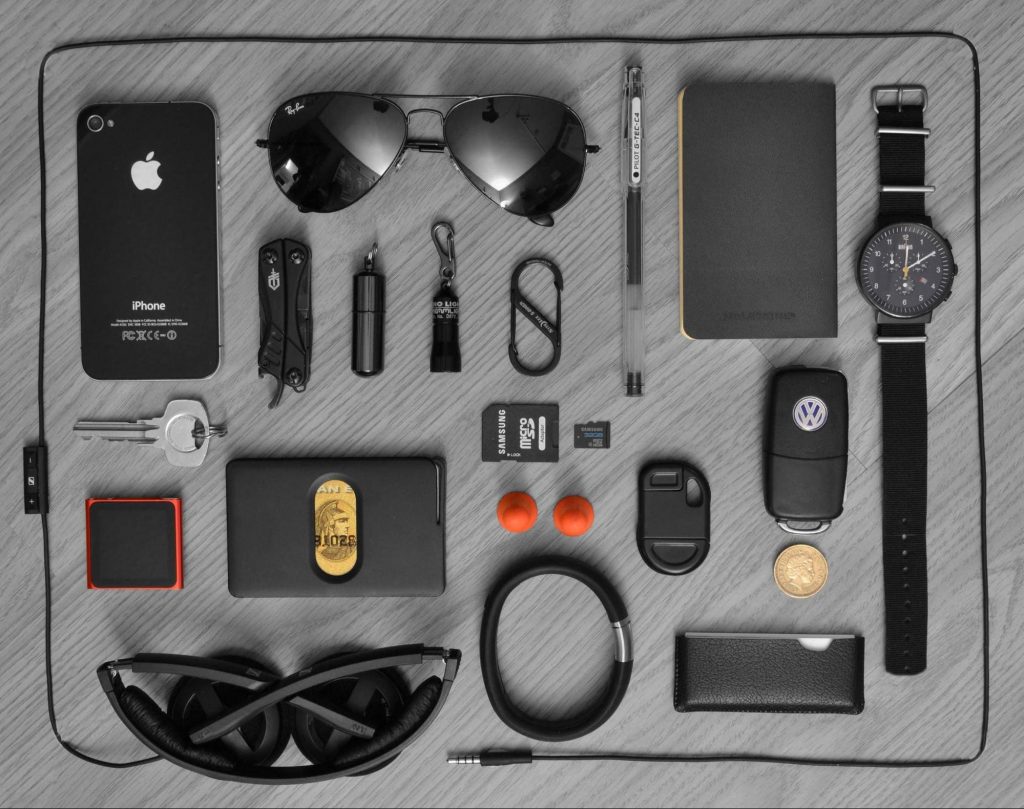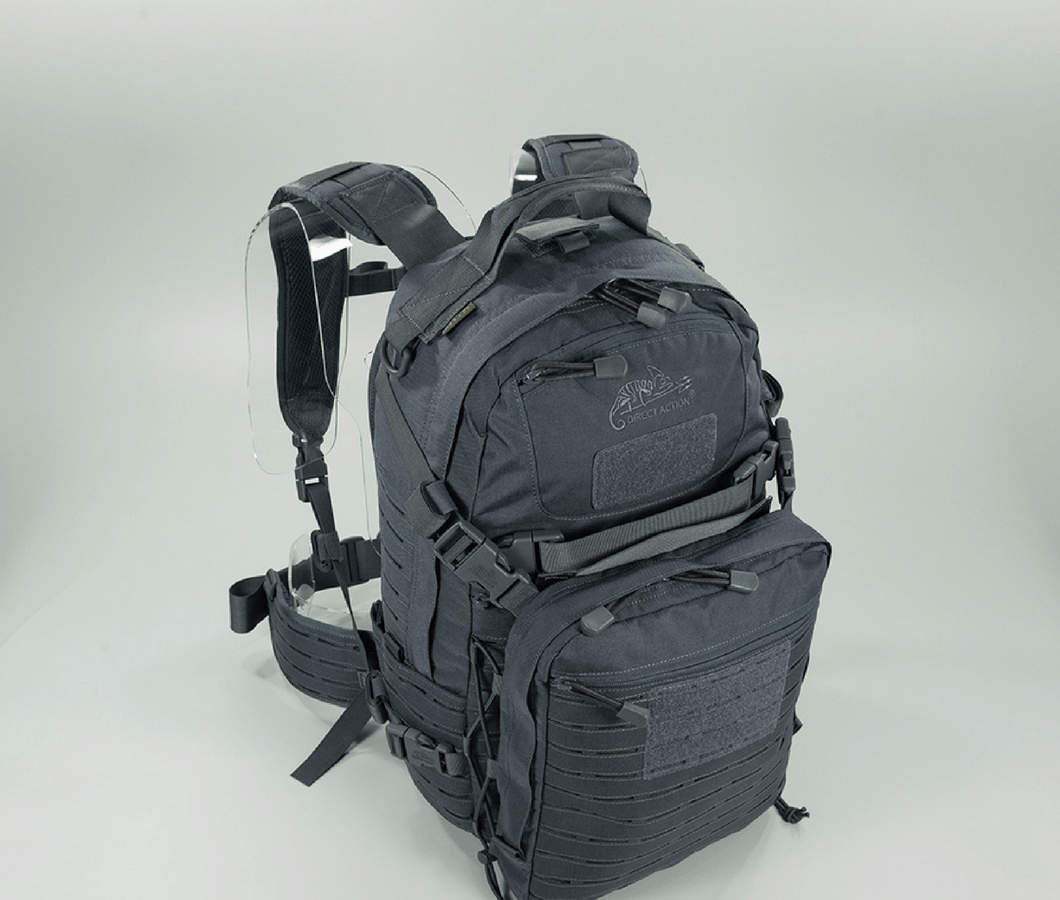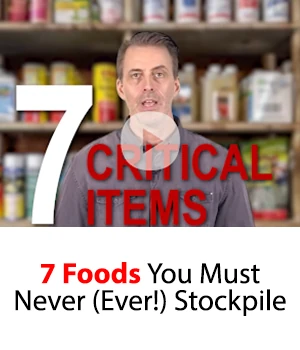Did you know that how you organize survival gear and supplies in your survival kit is the first step in emergency preparedness?
Many preppers overlook this fact. Some have experienced undue pressure when they can’t find a particular gear necessary to get them out of a dire situation.
Learning how to organize your survival items and supplies properly can save you time, effort and even money. You’ll know what you have for different survival scenarios and the quickest way to access it.
Like many beginner preppers, I had no idea how crucial it was to organize my emergency kit until SHTF. I had to spend several minutes locating my flashlight. To make it worse, the emergency happened at night and disrupted the power grid. It was an experience I do not wish anyone to go through. I had to make do with a candle which could not provide me with enough light to carry out my survival tasks.
I realized my mistake. I had kept all my smaller survival gear and supplies jumbled up on one location I called “emergency closet.” I don’t desire you also go through that terrible experience I had. I am happy to teach you a few tips and tricks to help you organize your survival items properly.
Planning Is Essential
Only by planning can you organize your emergency kit. The plan here refers to an emergency preparedness plan. This way, you can put your focus on the specific survival events. An excellent way to get everything right is to put it down on paper.
Pen and paper is an old-fashioned way of doing things, but physically writing ideas will let you know what you have included and what you’ve left out. The written plan will help you think through and brainstorm more ideas and worries.
Examples of scenarios you should plan for include:
- Off-grid situations
- Floods
- Nuclear fallout
- Fires
- Terrorism
- Extreme and severe weather conditions
I have just mentioned a few, but any state that disrupts and your normal daily activities and interferes with public utilities requires preparing for. Your geographical area may also predispose you to certain emergencies.
For instance, people who live in coastal areas that are seismically active should be concerned about tsunamis. Similarly, you should be concerned about avalanches or landslides if you need on slopes of a mountain.
As I always tell my young survival students, there is no way of telling with accuracy what disaster will strike and when it will happen. So, the best way according to me is to base your plans on your concerns and worries. You need to dedicate enough time for the exercise. Sometimes, you may have to rewrite the project over and over as you brainstorm new ideas.
Implement Your Plan
Do you know why the plan you created earlier is excellent? I’ll tell you.
It is now possible for you to use it as a blueprint or a roadmap showing your current location and where you need to go in order to boost your survival readiness.
Implement everything you wrote in the plan. Here, you will make the necessary preparations for each of the scenarios you included in your blueprint. Implementation involves sourcing for the supplies and gears you think will help you survive the situations of your concern. Here are my suggestions on how to go about this:
1. Lists Are Helpful
Numerous online resources are providing you with lists of gears, equipment, and supplies you need for survival preparedness. Such lists are great, but they are someone else’s ideas and may not be unique to your concerns.
As such, I recommend that you make your own list. With a personalized list, you can track your progress, evaluate your inadequacies and make adjustments as necessary.
I’ll advise you keep a running inventory list for your emergency water supplies and food rations, first aid kit as well as other supplies. The inventory should record expiry dates of different supplies and allow you to make changes as supplies are used, replaced or removed. Another list should have medical info, drugs, emergency contact number as other helpful information.
Although my recommendation to make a personal list stands, I would be flexible on one thing: checklists. I realize it may not be possible for beginner survivalists to remember all the kits and supplies they need. Initially, they can download free detailed checklists that are available online.
2. Categorization of Survival Supplies Makes Work Easier
Disasters have the tendency to strike when you least expect them. Home, work and car are among the most familiar places most people spend their time. So, you need to think of where you’ll likely to be when a disaster strikes.
Regardless of the place you choose, your goal should be to allocate certain places to store your essential supplies. This will allow you to grab the specific supplies you need in a moment’s notice. For instance, you could have a bug out bag permanently stored in your office at work or in your automobile.
Similarly, you can a permanent place in your residence to organize your emergency food, water, and survival gear. I would recommend you store the supplies in a place like a pantry/cupboard or cellar. Irrespective of the storage you choose, your goal is to ensure it is easily accessible.
Your food storage, water storage, and certain larger items should be in separated places. The story is different for the smaller supplies which you must put together. You can set these smaller items into seven categories including:
- Sources of light (flashlights, candles, headlamps, light sticks and many more)
- Sources of water (water purifiers, filtration systems, tablets, water bottles, etc.)
- First Aid Kit and other medical supplies (antibiotics, painkillers)
- Emergency kit food (MREs, energy bars, extreme sports beans among others)
- Clothing (safety vest, work gloves, hardhat, boots, warm jackets)
- Energy sources (solar charges, backup batteries, and battery packs)
- General survival items (multitools, paracord, navigation systems, etc.)
Once you have sourced all these items and put them in one place, you sort them in the categories I have mentioned above. This will make it easy to find what the particular supply you are looking for to help you solve a need.
Categorizing items in this manner has many more benefits. For instance, I can tell my kids or another person to get something from the closet, and they will quickly bring it because they know precisely where each item is located.
According to me, certain survival gears deserve their own boxes in my survival closet. These are items that feature odd shapes or cannot co-exist with others owing to their properties. Examples include cooker, WaterBOB, boxes of fuel tablets and battery powered fans. Solar lights and charges may also need their own storage spaces.
3. Careful, Secure and Proper Storage Is Crucial
When storing edible stuff like food rations and water, ensure you store each item in hygienic, airtight containers or bags. Similarly, separate and cover the things you have opened for use. Make sure you store the foods in the recommended environmental conditions to increase their shelf-life and prevent contamination.
If an item expires, ensure you remove it from the storage and discard it safely according to instructions. Make an immediate replacement of the expired supply to reduce the chances of you forgetting. Do not store something that can damage others contained in the same closet or place. It would be better to organize them in separate boxes or containers.
Also Read: 7 Affordable Items For A Budget Food Storage Plan
4. Label All Items for Easy Identification
Labeling your survival equipment clearly gives you an easy time when you want to reach for a particular item. With labeling, it is possible to have a photographic memory of where an item is so you can find it even in low light situations.
When labeling items such as food ratios, and First Aid Items like medications which can expire, ensure you record the expiry dates correctly. It is also vital to label items with ‘dates opened’ as some supplies may have accelerated expiry dates if opened. Doing these things will help you keep your supplies safe and fresh. You will also avoid wastage.
5. Try Organizing Your Kit into Levels
A great way to organize your survival equipment and supplies is to assign them into levels. There are four arbitrary levels you can use to categorize your emergency items. As the levels go up, the number of essentials at your disposal will increase.
I will discuss these levels briefly:
Level 1: Every Day Carry (EDC) Items

These are the things you will carry on your person at all times regardless of where you go as long as they are legal. Examples of such items include a good quality survival knife, a flashlight, wrist compass, a watch, a whistle, a 550 paracord bracelet, a multi-tool, a lighter and a concealed firearm.
You can also have some medical supplies that can help you with any crisis. If you asked me, I would tell you to always carry a CAT tourniquet in your pocket or your belt. Alternatively, you can still have a bandana which you can use to improvise a tourniquet.
Level 2: Load Bearing Equipment
This could be a smaller version of BOB (such as get home bag), chest rig, battle belt (preferably with suspenders), or an old-fashioned load bearing gear (LBE). A get home bag (GHB) can carry supplemental items similar to the ones you will carry in your chest rig.
Generally, items in this level should supplement or augment the items in level 1. For instance, you can carry ammunition for your firearm. Another example is an Individual First Aid Kit which augments your medical supplies. I always keep some level two items in my car.
Level 3: A Backpack

Here is where your backpack comes in. A good pack that can take in almost all the things you need for adequate preparedness should have a capacity of between 4000 to 6000 cubic inches which translates to 65 to 95 liters. Such size can take you through a week of emergency.
The notion that a BOB should carry enough items to last you for 72 hours is erroneous. A good one should have enough supplies to last you through 5 to 7 days of a disaster. Anyway, the amount of time you can take with supplies in a 65 to 95-liter BOB depends on your skill level and access to items in other levels.
Also Read: Build a 72 hour survival Kit with These Top 9 Items
Level 4: Items You Can Load In Your Automobile
This level represents items you can load into your car such as robust containers and bags. Examples of containers suitable for this level are military kit bags, pelican cases, and action packers among other durable containers.
Ensure you can move the load on your own. Since you are using your car, you should consider it part of this level as well. The get home back in the second level can function here as your bailout bag. It is so called because you can use it to move out of your car in duress.
Level 4 items are those you will need for survival a disastrous situation forces you to travel long distances to get to your destination. It is not a nice feeling to move out without your car. If you are moving from your residence with the vehicle, you might need to carry your EDC, your level 3 backpack, and your level 2 GHB.
In case your vehicle breaks down on you have to depart without it, you’ll need to carry level 2 chest rig, level 3 BOB, and a GHB that can attach to your level 3 backpack. To avoid the inconveniences of moving without your vehicle, make sure it is in optimal condition to be reliable in case of a crisis.
Wrapping It Up
I believe this article has address all there is to know about how to organize survival gear and supplies. The significance of proper organization runs the gamut. Topping the list is the convenience it will give you when you have to reach for an item in a hurry. A correct organization will also help you pack all the things you need for common emergency scenarios. I know the task can be challenging, but that’s what you need for successful survival.


